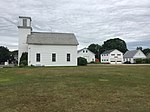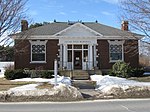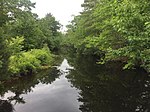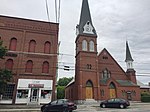Center Barnstead, New Hampshire
Barnstead, New HampshireNew Hampshire geography stubsUnincorporated communities in Belknap County, New HampshireUnincorporated communities in New HampshireUse mdy dates from July 2023

Center Barnstead is an unincorporated community in the town of Barnstead in Belknap County, New Hampshire. It is the largest of several villages in the town. New Hampshire Route 28 bypasses the village to the northwest, connecting Pittsfield to the southwest and Alton to the northeast. New Hampshire Route 126 begins at Route 28 and passes through the village before continuing southeast towards Strafford and Barrington. The village is located along the Suncook River and was a station along the former Suncook Valley Railroad. Center Barnstead has a separate ZIP code (03225) from the rest of the town of Barnstead.
Excerpt from the Wikipedia article Center Barnstead, New Hampshire (License: CC BY-SA 3.0, Authors, Images).Center Barnstead, New Hampshire
South Barnstead Road,
Geographical coordinates (GPS) Address Nearby Places Show on map
Geographical coordinates (GPS)
| Latitude | Longitude |
|---|---|
| N 43.340555555556 ° | E -71.260833333333 ° |
Address
White Buffalo Trading Post
South Barnstead Road
03218
New Hampshire, United States
Open on Google Maps










